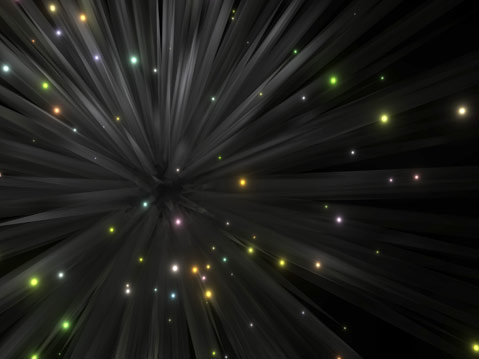George Legrady’s Stardust
Exhibition at Edward Cella Branches Art, Science

The relationship between art and science has captured the human imagination for centuries, certainly since the experiments of Leonardo da Vinci in the 15th century, an era when the roles of artist and inventor were almost indistinguishable. For a time, the two disciplines were intentionally separated, the logic and empiricism of science set aside from the creativity and subjectivity of the arts. Today, with the rapid development of technology, art and science are being brought together once again in an attempt to satisfy mankind’s never-ending curiosity about the universe.
One of our modern-day da Vincis is George Legrady, a pioneer of computerized art. Legrady was one of five artists recently commissioned by the Spitzer Science Center at Caltech and the Art Center College of Design in Pasadena to create artworks that respond to the data and images generated by the NASA-managed infrared deep space Spitzer Space Telescope. Stardust, the current exhibition at Edward Cella Art + Architecture, runs concurrently with Legrady’s Observe exhibition at the Art Center in Pasadena. While Observe features a multimedia screen projection installation where the viewer can experience the simulated environment of the telescope in space as it orbits the sun, Stardust captures the experience on a more immediate level by visualizing data collected by the telescope into photographic stills.
Legrady’s photographs are the product of art converging with the most advanced technology available. The artist uses a software program that plots the 3-D positioning of spatial objects, and the resulting works feature starbursts of bright, diode-like lights with prisms of lighted trails following behind. Each photograph is unique, capturing a snapshot of the data taken at a singular, irreplaceable instant.
These images are at once monumental and intimate. One the one hand, they refer to an unimaginably massive scale and provide a physical stand-in for vast theoretical concepts. On the other, they compress huge quantities of data into a single moment and represent outer space on a nano scale. By offering the viewer the universe on both scales simultaneously, Legrady makes a statement at once poetic and scientifically inquisitive. It’s the best of both worlds.



